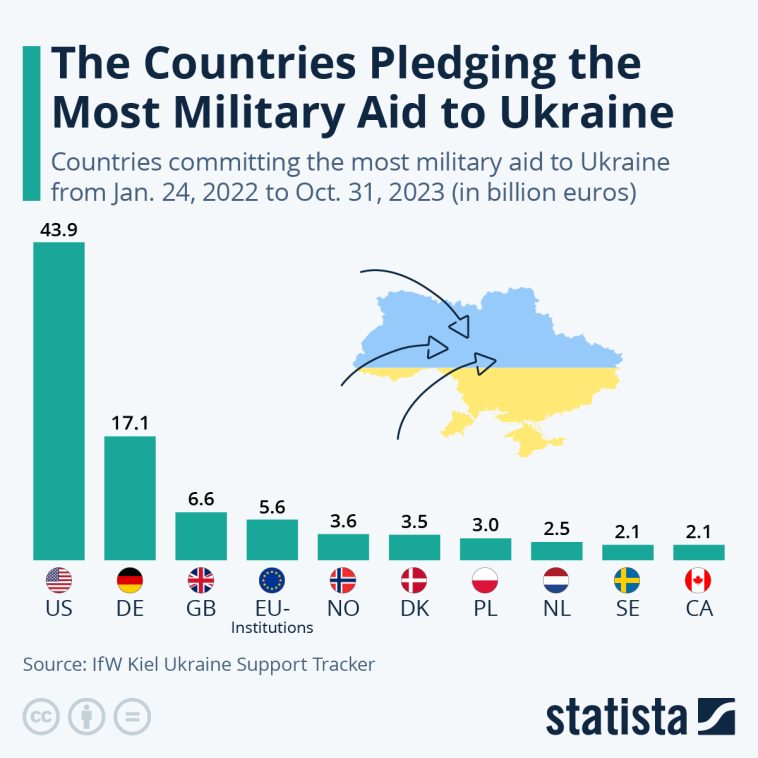As the current administration draws to a close, President Biden has made the decision to send a substantial military aid package to Ukraine, valued at $2.5 billion. The outgoing President made this decision in a commendable attempt to help the Ukrainian people retain their independence against Russian aggression. These developments have been taking place towards the ending of December, and the Russians have seemingly been taking further steps to pressure Ukraine. Nonetheless, since the full-blown invasion by Russia in February 2022, the United States, under Leadership of Biden, has been a significant pillar of support to Ukraine.
According to President Biden, arming Ukraine with necessary resources to fight off this adversity has been a focal point for his administration. The significant aid package is built upon by the final donations made to Ukraine by the outgoing President and is likely to fortify the U.S. backing as the nation faces possible cuts under the anticipated administration. As part of this—potentially—last major move, the administration aims to offer a wide array of military paraphernalia, including artillery rounds, rockets, and armored vehicles.
The current aid package proposed by Biden’s administration is clean-cut, incorporating two prime elements: a $1.25 billion drawdown of U.S. military materiel and a $1.22 billion Ukraine Security Assistance Initiative (USAI) package. Summed up, these funds aim to amplify Ukraine’s immediate defense operations on the frontline, whilst also ensuring an extended scope of support through essential weapon systems. Furthermore, it appears the administration is putting efforts to speedily deliver this equipment to Ukraine, enhancing the U.S. defense industrial strength to refill its stockpiles.
So far under Biden’s governance, Washington has pledged an impressive $175 billion towards aid for Ukraine, an act that reiterates not only Biden’s commitment to the cause but also a broader narrative of the U.S. dedication to supporting global democracy. With the considerable aid numbers, news sources such as Reuters outline the gargantuan commitment of the United States towards ensuring Ukraine’s sovereignty.
Entering the new administration, there may be a pledge for the swift conclusion of the war in Ukraine by the President-elect. The incoming leader has stated an ambitious goal of achieving a peace agreement in Ukraine within 24 hours of assuming office. It seems this would be achieved through a peace agreement negotiated between the Russian and Ukrainian leaders, though the specifics of such negotiations are yet to be publicized.
Early talks suggest that facilitating peace may entail a strategic negotiation hosted between President Vladimir Putin of Russia and President Volodymyr Zelenskyy of Ukraine. Indeed, echoes from the diplomatic corridors advocate that Ukrainian leadership should be primed to strike a deal with Russia’s Putin to alleviate the persisting conflict that has been raging for close to three years now. Such a strategic move towards peace summons a new chapter in diplomatic relations between Ukraine and Russia and may result in stability under the incoming administration.
With the transition of power mere weeks away, observers will keenly watch to see if the audacious promise to end the war within 24 hours materializes. Despite the optimistic rhetoric, skepticism lingers on the realistic prospects of achieving such fast-paced, harmonious resolutions. The underpinning dynamics involved in the geopolitical landscape coupled with the existing military engagement suggest the quest for a speedy resolution to be quite an uphill task.
As a new phase in the American administration takes shape, a keen eye will be kept on the strategies and diplomacy adopted towards existing global conflicts. Primary among these is the ongoing Ukrainian conflict that seems to be at the top of the next administration’s priority list. As such, the world is keenly waiting to see if the United States will maintain its prior commitments or adjust its policy regarding the Ukrainian issue.
While we await the actions of the incoming administration, it’s worthwhile to remember the strides made by the outgoing one. The Biden administration has shown considerable commitment to upholding Ukraine’s sovereignty, as indicated by the generous aid package. Their efforts have certainly helped to buffer Ukraine against Russia’s aggression, and it will be interesting to see how the next administration will build upon these actions.
Looking forward, the challenge of resolving the conflict in Ukraine will be a test of the new administration’s foreign policy grit. The U.S. has historically enjoyed a unique position in global affairs, often the vanguard in championing democratic values around the world. As such, how the incoming administration manages the situation in Ukraine will be watched closely around the globe.
Regardless of the approaches taken by the new president in handling Russian aggression, it is undeniable that the U.S. remains a key player in international geopolitics. The decisions made in American corridors of power hold significant global ramifications, especially in terms of maintaining or reshaping the power balances. As such, the plans laid out by the president-elect for Ukraine mark the start of a significant phase in U.S. foreign diplomacy.


